Try to pass a ring through a tortuous wire without letting it touch! It sounds simple if you think only in terms of challenge.
However, it will not be so simple if you think that there is an electronic device supervising you in this task and that, if you make a mistake, this same device takes care of punishing you with a “beautiful” electric shock, but harmless.
Assemble this “shivering” and challenge your friends to a competition of technique, skill and especially courage. See who can take the ring to the end of the tortuous wire without being shocked, without dropping everything or without making a mistake!
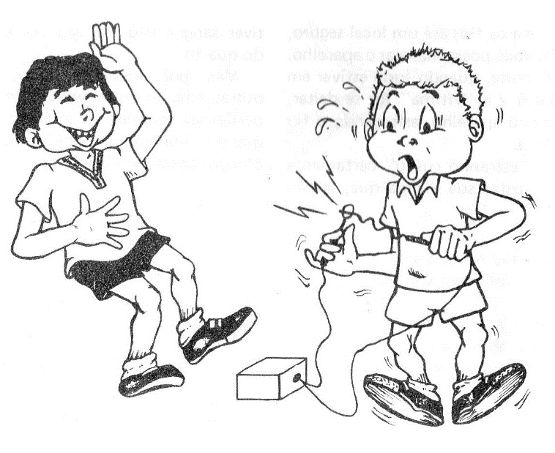
Extremely simple to assemble, the "shivering" uses only two components which can be obtained very easily in specialized stores at a cost that is available to any reader.
HOW IT WORKS
Cell batteries do not give shock, as the 1.5V they supply is insufficient to force an electric current through our skin. For there to be a sensation of shock, it is necessary to raise the tension in the first place so that, overcoming the resistance of the skin, a current that drives our nervous system can circulate.
We can achieve this through a device called a transformer. This device, as shown in Figure 2, has two windings, one formed by a few turns of wire and the other by many turns of enameled wire.
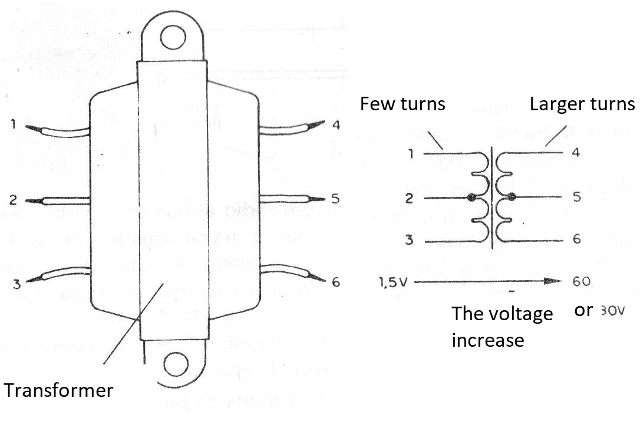
If we momentarily apply a low voltage to the winding of a few turns, it will multiply and appear much higher in the winding of many turns.
With a common transformer, the type which reduces the plug voltage from 220 V or 110 V to 5 or 6 V, we can obtain 60 to 80 V from a large common cell battery, which is enough to give a good shock, however totally harmless, due to its short duration and low current.
The transformer will then be connected in such a way that it "triggers" when the players miss and applies the high voltage to the wire and ring cables that they hold!
ASSEMBLY
Since only two components are used, assembling it is very simple. However, there is a need to carefully prepare the wire and the ring with thick wire, as shown in Figure 3.
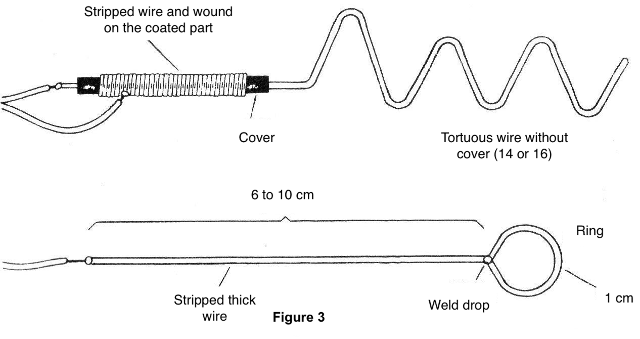
The wire is made with a 40 cm piece of a common, thick wire (14 or 16), from which we strip almost everything, leaving only a cover at the end, of about 5 or 6 cm. The rest of the wire is bent, forming several curves, as shown in the same figure.
The ring is made with a piece of 7 or 8 cm from the same wire, completely peeled. Form an arc of approximately 1 cm in diameter and weld the point at which it closes.
The complete circuit of the “shivering” is shown in Figure 4.
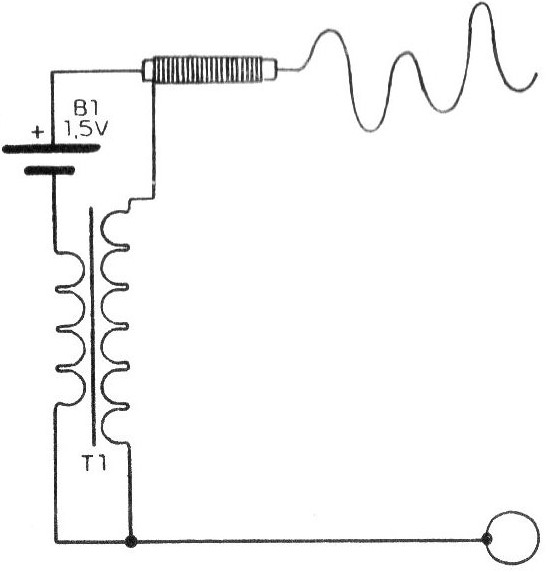
The transformer used can be one of the type with a primary of 110 V and 220 V of 5 to 9 V and a secondary with 100 mA or more current. If you have an old valve radio, you can use the output transformer which is connected to the speaker. The wires which go to the cell battery are the ones that were connected to the speaker.
Figure 5 shows the ready assembly of the device.
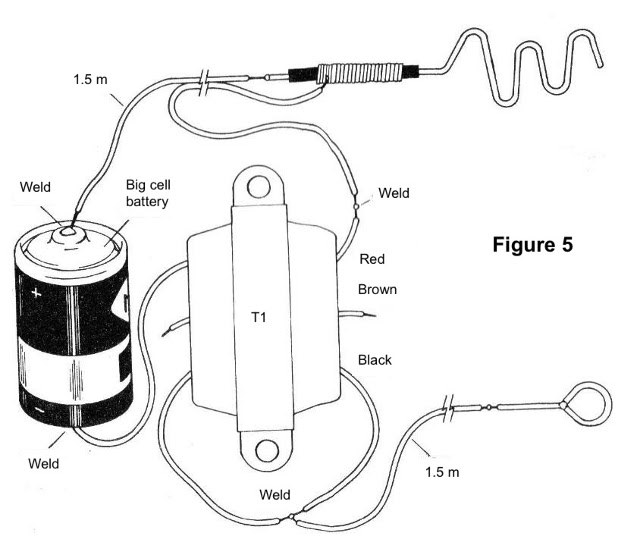
At all welding points you must clean the wires thoroughly, especially the transformer if they are enameled. Follow the colors of the connecting wires, because if there is an inversion, it will not work. See that two wires remain disconnected.
Assemble everything in a box, preferably resistant to tipping and bumps, as the tugs that the "victims" of the shocks will give, without a doubt, can cause damage to the device. Tie a knot in the points where the wires leave the box to prevent these pulls from pulling them out.
TEST AND USE
Once assembled (place only a large, new cell battery), hold the twisted wire and ring, one in each hand. Try carefully to pass the ring through the wire without letting one touch the other. If this happens, you will soon see if the device works or not!
When playing, establish that one should not hold on to the string.
When you are not using it, do not leave the ring in contact with the wire in any way, as this, in addition to not causing the device to trigger, shocking anyone who picks it up, as the reader might think, causes the cell battery to wear out quickly.
Always store the appliance with the ring separated from the wire.
T1 - power transformer with a primary of 110/220 V and secondary of 5, 6 or 9 V with a central outlet and at least 100 mA of current
B1 -1.5V - a large cell battery
Miscellaneous: 50 cm of 14 or 16.1 m of stripped wire, 5 m of common wire, mounting box, etc.



